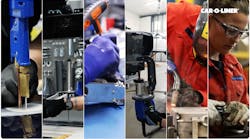Light trucks (including pickups and SUVs) show a more sizeable gain in the same time frame, from 10.1 years to 10.4 years. Overall, average vehicle age has been increasing quickly over the past five years. Polk reports average age based on an analysis of national vehicle registration data.
The slowdown of the aging of passenger cars directly correlates to the low sales volumes and the mix of car and truck sales in the U.S. market in 2008 and 2009, a time in which more trucks than cars were registered. While more trucks were sold over the same timeframe, they showed a faster aging rate. Polk expects this trend may change in the coming years as CUV and small SUV populations in the U.S. market have risen in 2010 and 2011 due to their continued success in the market.
Additionally, the rebound in new vehicle sales in 2011 and for the next couple of years will most likely slow down the aging rate seen in the market over the past three years, according to Polk.
The aging U.S. vehicle fleet is bad news for collision repairers, because vehicle age is a key determining factor in whether a damaged vehicle gets repaired or scrapped. However for service repairers, it offers increased business opportunities.
“The increasing age of the vehicle fleet, together with the increasing length of ownership, offers significant business growth opportunity for the automotive aftermarket,” said Mark Seng, global aftermarket practice leader at Polk. “Dealer service departments and independent repair facilities, as well as aftermarket parts suppliers, will see increased business opportunity with customers in need of vehicle service.”
2011 marked the end of the U.S. vehicle population decline that has occurred annually since 2008. According to Polk, the total vehicles in operation (VIO) in July 2011 was just over 240.5 million, an increase of 500,000 units over July in the previous year, and nearly equal to 2009 VIO. The highest VIO on record was achieved in July 2008, when more than 242 million passenger cars and light trucks were on America’s roads.

